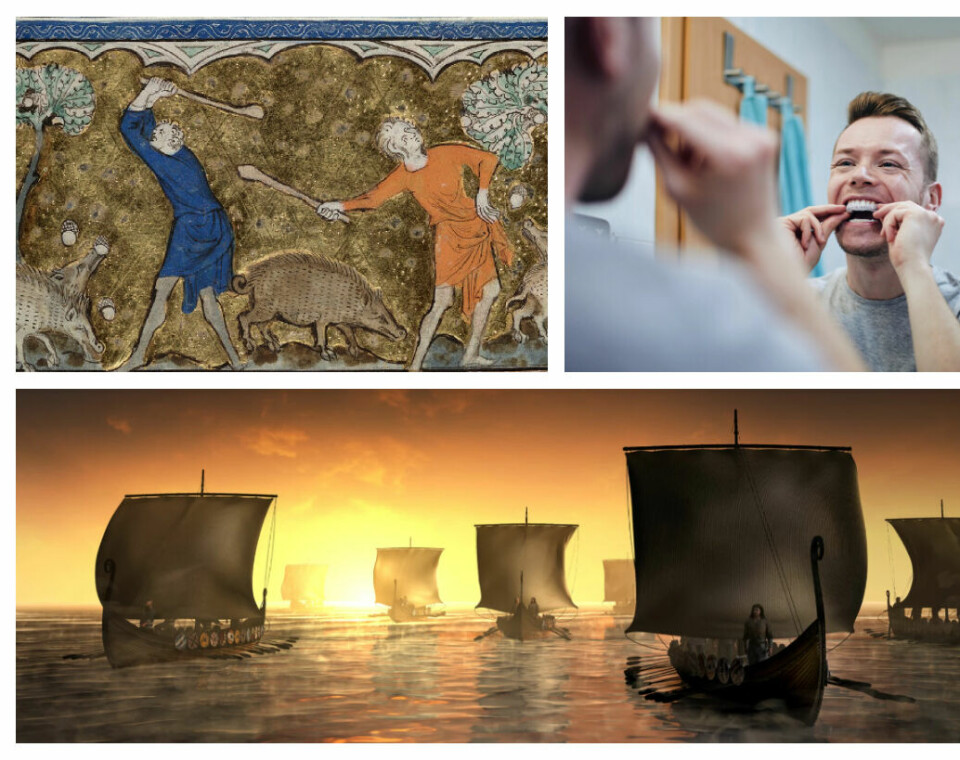
Top 10 of 2023: Scrotums, Vikings, and man flu
We now know who the Vikings had children with, and we have gained insight into a very delicate problem in the Middle Ages. Here is the list of our most read articles in 2023.
From the Middle Ages to teeth whitening and man flu. New scientific discoveries were made in 2023, and we got new insight into a wide range of topics.
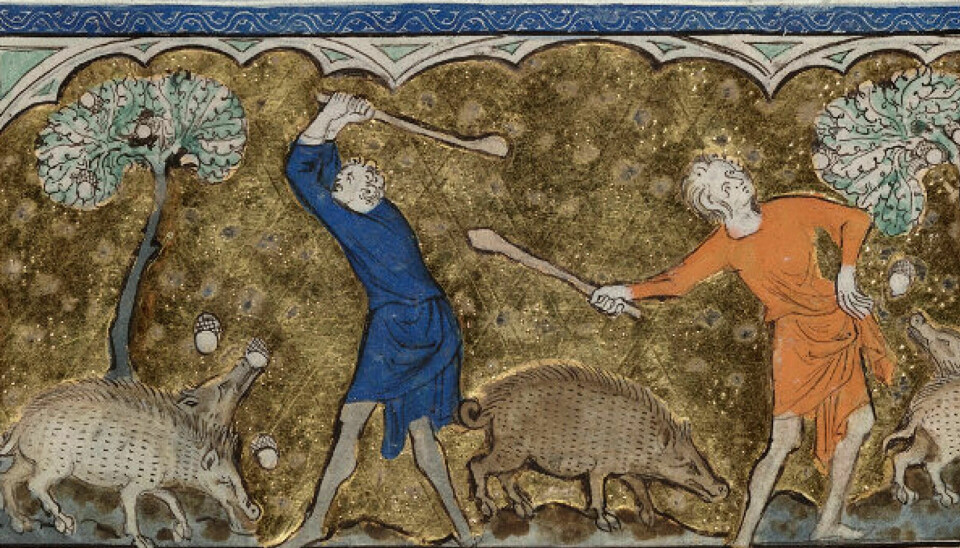
1. Watch out for pigs
It was quite common to have a pig in your backyard in Europe's medieval towns. But you could be fined if your pig was allowed to roam freely, or if it bit off someone's scrotum while they were using the outhouse.
The article Pigs provided food in the Middle Ages, but men had to watch out for their scrotums was the most read article at sciencenorway.no in 2023.

2. We now know who the Vikings had children with
The Vikings had a lot of contact with the different people around them. Many came from foreign lands to Norway, Sweden, and Denmark. They brought new genes with them. The DNA traces in Norway point above all to the British-Irish islands and to the northeast, according to a study ScienceNorway wrote about in January 2023.
The researchers have created a map that you can view in the article. It shows how the traces of genes from the British-Irish islands are still found in Norwegians with origins in southern Norway.
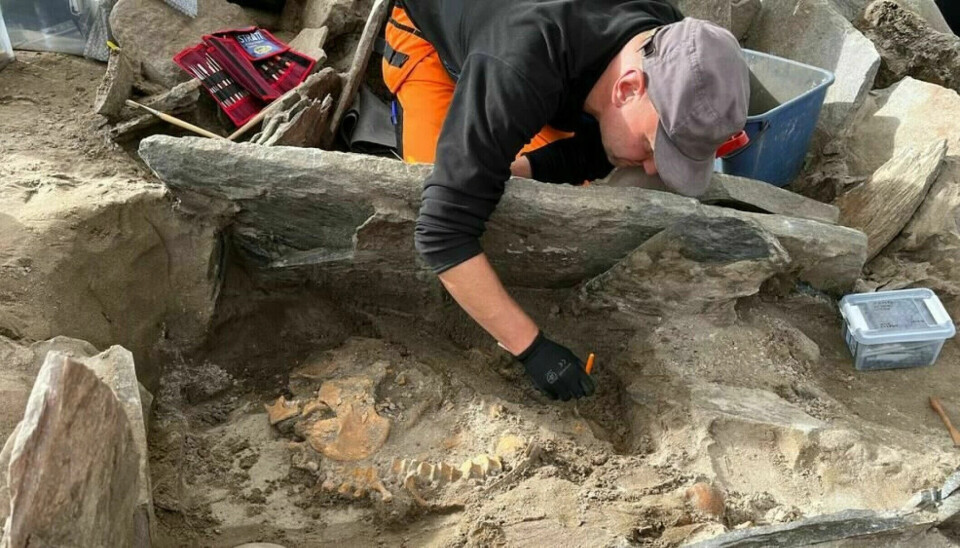
3. A 4,000-year-old grave with skeletons
People have lived in Seljesanden in Western Norway for at least 4,000 years. One of them was a one-year-old child. Another, presumably a man, lived to around 65 years old and had arthritis. A third was a young woman.
We know about these people because archaeologists found their grave in September 2023. It was a so-called gallery grave from the Neolithic Age, something that has never been found in Western Norway before.
Norwegian archaeologists named this the find of the year.
“This is a very rare find in Norwegian archaeology that will be important for future research. There are great opportunities for further analyses here. We hope to perform DNA and isotope analyses, and learn more about these individuals and their life stories.”

4. Why do men get sicker from viruses than women?
‘Man flu’ has become an established phrase when joking about how men complain more than women when they have a cold or the flu. However, some scientific research now suggests that men actually do become sicker from viral infections.
In a study from 2023, researchers at the University of California, Los Angeles (UCLA) uncovered a possible difference between the immune systems of men and women.
This might help to explain gender differences in how men and women react to viral infections.

Most viewed
5. Is teeth whitening actually harmful?
Many people whiten their teeth. Some at the dentist, others get their own equipment and do it at home. Is teeth whitening actually harmful?
Line Bjerklund Pedersen is a dentist. She is also the head of the ethics council of the Norwegian Dental Association. She mentions that the treatment is mainly for cosmetic purposes and is unnecessary. More concerning is that it could potentially damage the enamel.
According to Pedersen, the teeth of older individuals are particularly more susceptible to damage.
Aida Mulic is a senior researcher at the Nordic Institute of Dental Materials (NIOM). She points out the same: Discolouration due to ageing is difficult to address.
“The whitening agent is acidic, so it is not something we recommend doing too often,” Aida Mulic says.

6. Why Norway has banned the breeding of Cavalier King Charles Spaniels
In 2023, Norway’s Supreme Court ruled that the breeding of Cavalier King Charles Spaniels violates the Animal Welfare Act.
“It’s good that further breeding of the Cavalier is now illegal. But I believe the Supreme Court has landed on the wrong side when it comes to the English Bulldog,” professor Henning Andreas Haga says.

7. Almost everyone has plaque in their arteries
Doctors call clumps of fat deposited on the inside of our artery walls atherosclerosis.
“It may sound scary, but it's very common,” Gunnar Austad says. He is a radiologist and PhD candidate at the University of Oslo.
In a recent study, he and his colleagues found plaque in the blood vessels of as many as 97 per cent of all healthy people they examined.
They have found a method which he believes can more quickly determine how dangerous this plaque is for our heart and brain.
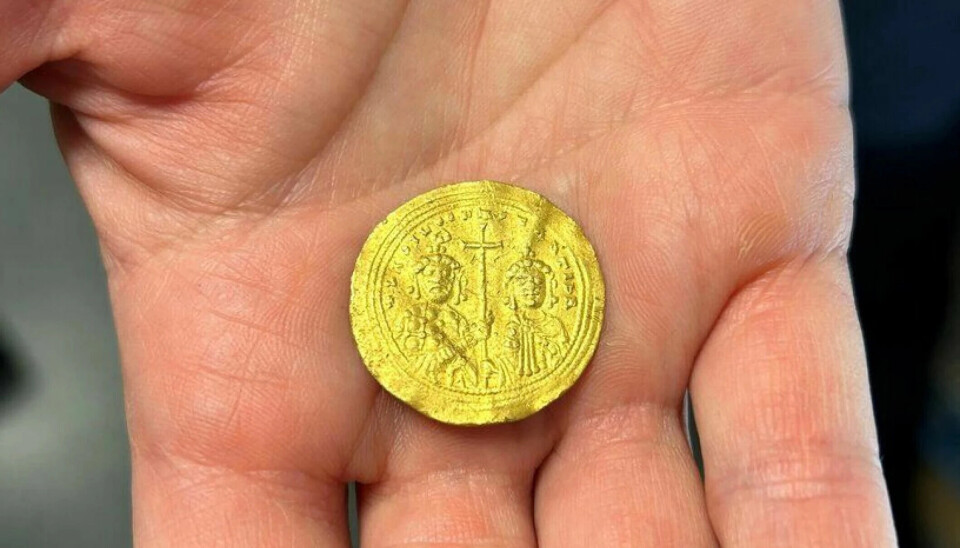
8. Unique coin found
Could it have been part of the great treasure that Harald Hardrada brought home from Constantinople? A metal detectorist brought the gold coin to light last autumn after it had spent a thousand years in the mountains of Valdres.
“It’s difficult to brag about finds so much because it sounds absolutely incredible. But that's what it is,” says May-Tove Smiseth, the county archaeologist for Innlandet County in Eastern Norway.
“That he found a gold coin on a random trip in the mountains is completely surreal,” she says.

9. Why do you feel cold when you have a fever?
Your brain is playing tricks on you.
When the brain has decided that you will have a fever, something strange happens. Your body gets warmer than usual, but you start feeling cold. It is your immune system that tries to make you well again. But what is really happening?
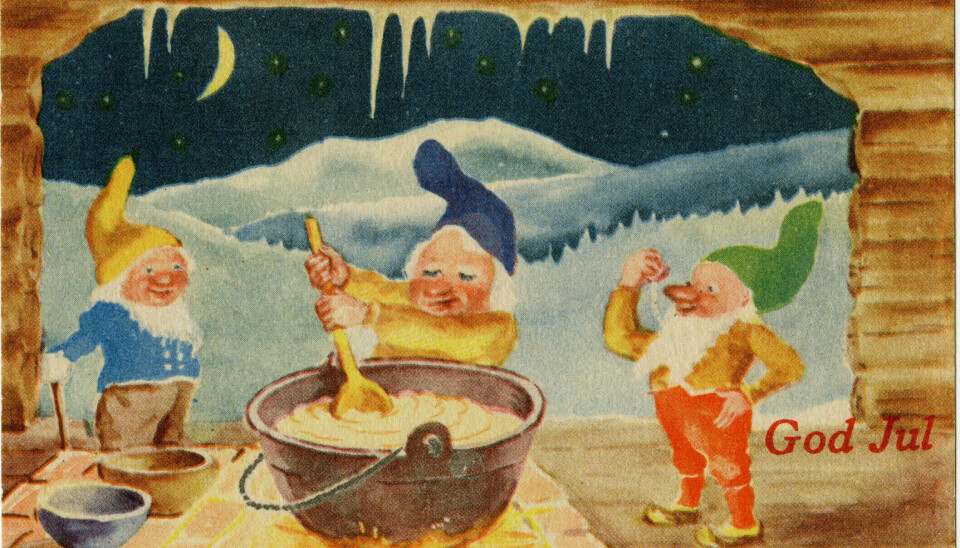
10. Resistance against Nazi occupation using Christmas cards
After red Santa hats were banned in Norway during World War II, many creative Christmas cards appeared.
The text God norsk jul (Good Norwegian Christmas) adorned the cards, and they were filled with Norwegian symbols. Flags, ski jumping, rose-painting, and notably: Christmas gnomes with red hats.




































